2023 Toyota Sienna Review: It's all about the mpg
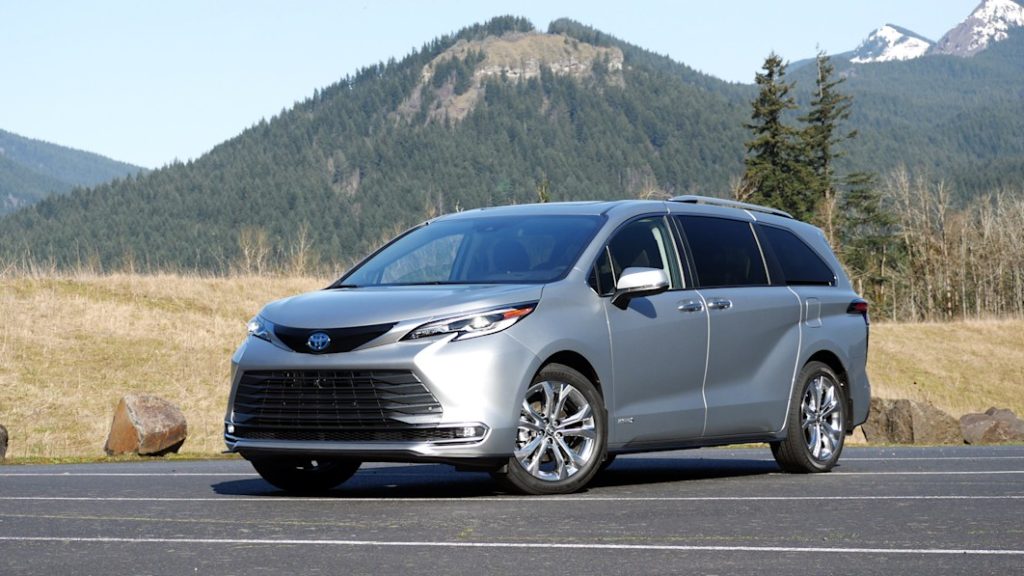
Pros: Monumental fuel economy advantage; big-kid-friendly second-row; above average handling; interior storage
Cons: Not as powerful as other minivans; less advanced infotainment; cheap interior materials on lower trims
Every 2023 Toyota Sienna is a hybrid, with fuel economy of either 36 or 35 mpg combined depending on whether you get the optional all-wheel-drive system. That is a monumental advantage over most of its minivan competitors, which are powered by V6 engines and return 22 mpg combined. Given today’s gas prices, the EPA says you could save upwards of $1,000 every year versus other minivans (or various large crossovers). This efficiency is the main reason we consider the Sienna your best bet for a minivan.
It’s not just a one-trick pony, however. It’s otherwise a fully competitive minivan with other strong points that include exceptional cabin storage, a bold interior design and versatile Super Long Slide second-row seats that are especially good for parents with older kids. The Sienna’s handling is also sharper than its competitors, while its feature content, cargo space and safety are similarly strong. Therefore, with most other elements being equal or at least similar enough, we can circle back to the Sienna’s massive fuel economy advantage being a deciding factor.
Now, there is one competitor that can save you even more gas: the Chrysler Pacifica Hybrid, a plug-in hybrid that offers all-electric range that could make it even more efficient (the Sienna is a regular hybrid that doesn’t need to be plugged in and does not include electric range). Unfortunately, the Pacifica Hybrid is pricier and may be harder to come by in today’s climate, which is why we ultimately chose the Sienna as our top minivan choice despite a near tie in our Sienna vs Pacifica Hybrid comparison test. Either way, we’d consider both of these first when looking for a minivan.
Interior & Technology | Passenger & Cargo Space | Performance & Fuel Economy
What it’s like to drive | Pricing & Trim Levels | Crash Ratings & Safety Features
What’s new for 2023?
Minivan collectors rejoice! A 25th Anniversary Special Edition is added to the Sienna lineup for 2023 heralding exactly what its name implies. It’s based on the XSE trim level, but features a few extra luxury features from the Limited trim plus unique exterior and interior styling elements. It is available only in Celestial Silver or Wind Chill Pearl.
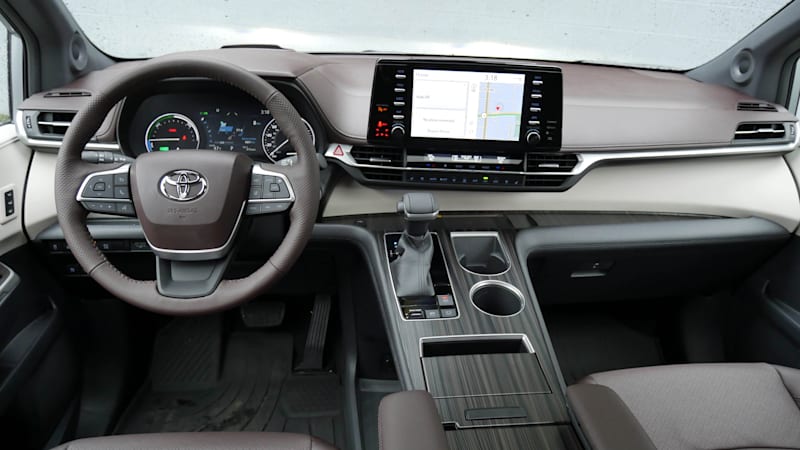
What are the Sienna interior and in-car technology like?
The Kia Carnival has since trumped it, but the Sienna’s front cabin is still shockingly high-style for a minivan. The controls are canted ever-so-slightly toward the driver, while the high center console provides more of a car- or SUV-like feel. Nevertheless, that console is really just a bridge over a vast open canyon ripe for whatever you want to put down there (likely a purse or small diaper bag). There are a number of other handy places up front to stow things, as well, which we go over in this deep dive review of the Sienna’s interior storage.
Unfortunately, we’ve found that cabin quality differs widely depending on trim level. The upper XSE, Limited and Platinum (above right and below right) trim levels get padded, leather-look trim across the doors and a modern wood-look trim level across the console. By contrast, the lower XLE trim level (above left and below left), gets hard textured plastic instead of the padded stuff and bizarre rust-colored plastic trim with embossed lines and metallic specks. It looks cheap, and it’s the difference between the Sienna being better than its competitors and being a little bit worse.
As for technology, all the usual features are present and the 9-inch touchscreen is easily seen, reached and operated. It’s just outdone by every competitor’s system, especially Chrysler’s and Kia’s. The rear seat entertainment system also offers only one roof-mounted screen, versus the dual seatback screens of the Chrysler, and its USB ports are not as conveniently located as those of the Chrysler and Kia.
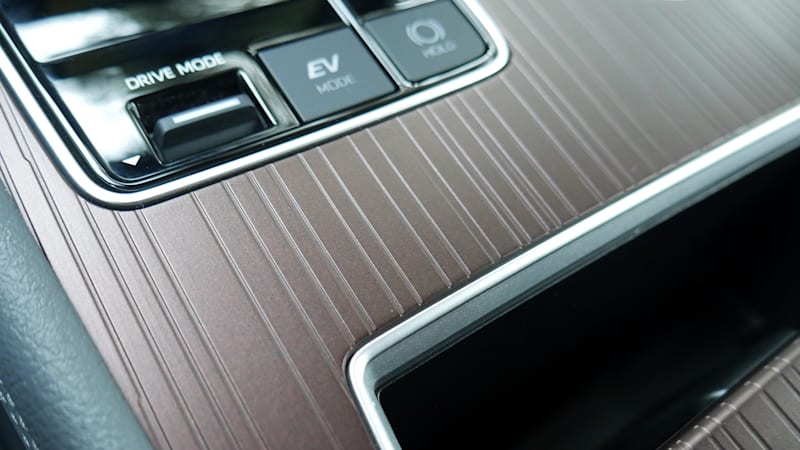

How big is the Sienna?
The Sienna is comparable in size to the other minivans. We didn’t find it any more maneuverable or less cumbersome to drive in tight places, and it offers the same sort of vast cargo space behind its third-row seat. Now, its specs indicate far less cargo space when the third row is lowered as well as when the second-row seats are removed, but we suspect this is due to a difference in the way Toyota measures cargo capacity. In reality, we think it’s effectively similar.
Really, minivans most differ in terms of their second-row seating concepts. The Sienna offers a choice of two (and is most similar to the Kia Carnival). The eight-passenger model is probably better suited to parents with smaller kids since it comes with a removable second-row middle seat that you can affix a child seat to while keeping the outboard seats open. The seven-passenger setup found on upper trim levels features the new “Super Long Slide” second-row captain’s chairs, which slide further than its competitors by a considerable amount. Slid to the rear, they provide enough legroom for NBA forwards to kick back and relax. They also slide forward all the way to the front seats, making it more likely to fit whatever you need inside without moving the seats (while being more comfortable than the non-hybrid Chrysler Pacifica’s Stow ‘N Go seats). A second lever folds the seat cushion up and the seatback forward to either provide an easy ingress into the third row, or to maximize cargo volume even further.
There are certainly advantages to Stow ‘N Go (for those who prioritize cargo-carrying versatility) and Honda’s “Magic Slide” second-row (for those with multiple small children), so there isn’t a right or wrong answer here. Choice is good. In this case, we think the Sienna’s concept is best suited for families with older kids.
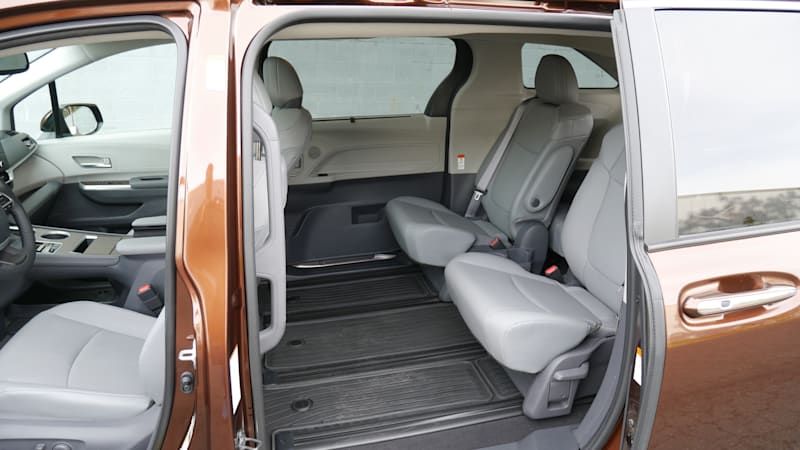
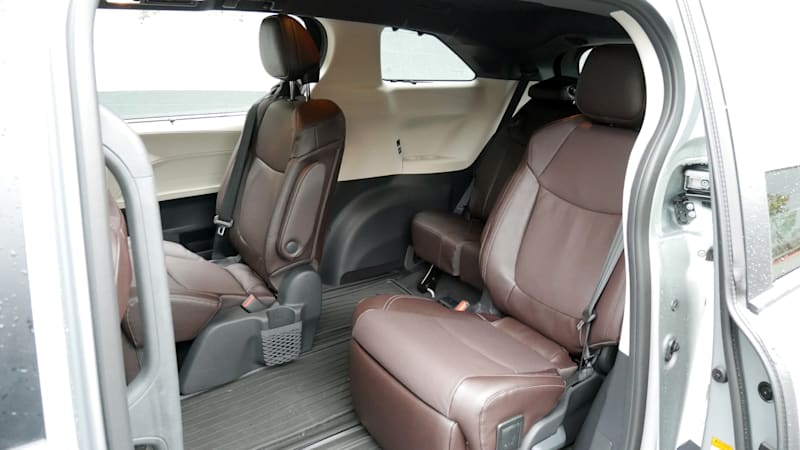
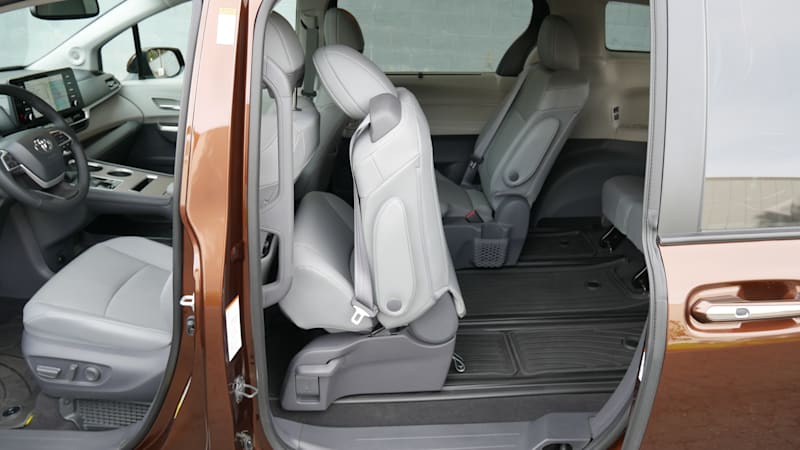
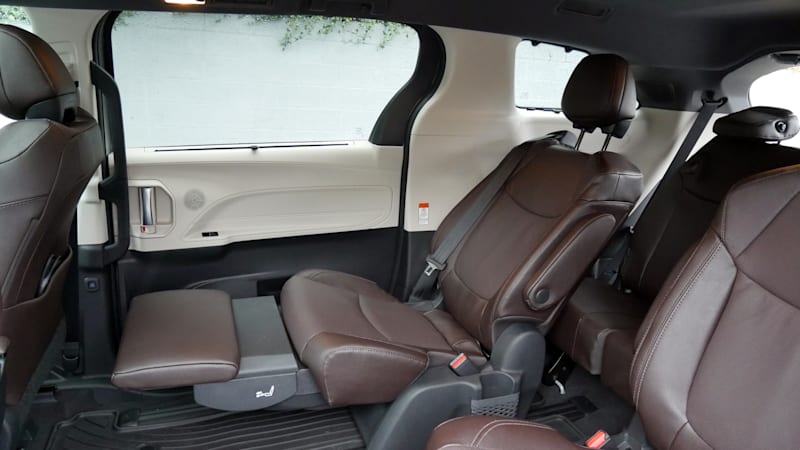
What are the Sienna fuel economy and performance specs?
Every 2023 Toyota Sienna is a hybrid. There’s a 2.5-liter four-cylinder and two electric motors, plus a third added to create the available all-wheel-drive system. Its battery recoups energy from the brakes and engine (it’s not a plug-in hybrid like the available Pacifica Hybrid, which has all-electric range and a higher price). Total system output is 245 horsepower, which is less than its V6-powered competitors.
Fuel economy is massively better, though. Toyota estimates the Sienna will get 36 mpg combined with front-wheel drive in EPA testing and 35 mpg combined with AWD. We averaged 39.4 mpg on a 454-mile road trip without making any effort to drive efficiently. The Odyssey, Carnival and V6-powered Pacifica get 22 mpg combined. Because of today’s high gas prices, that’s a difference that could equate to as much as $1,000 in gas savings per year with the Sienna. Even if gas prices go down, you’ll still be looking at a figure in the hundreds. That’s impossible to ignore.
What’s the Sienna like to drive?
The hybrid-only Sienna certainly won’t be the top choice for lead-footed minivan drivers, but that’s a minority, if possibly an oxymoron. For everyone else, power should be perfectly adequate, while the instantaneous nature of the electric torque actually makes it feel quick off the line around town. You do have to live with droning from the e-CVT, though, especially when accelerating onto the highway.
Otherwise, the drive is smooth and mostly quiet with shockingly responsive handling. When not accelerating, the engine makes little sound. Noise from the wind and road are mostly filtered out before intruding into the cabin. The suspension is taut enough to provide good support for the Sienna’s long, bulky body, but not punishing over the craggy roads of southeast Michigan and northwest Oregon where we drove the Sienna. It’s actually now the most engaging minivan to drive. This is in contrast to most versions of the old Sienna, which could be rather floaty. We used to suggest buyers go for the more controlled Sienna SE trim level, and although the similarly “sporty” new XSE trim does sharpen the Sienna, it’s certainly not a must-buy for those who prefer a more composed or engaging drive.
As for the Woodland Edition (pictured above), do not expect the Subaru Outback of minivans. Don’t expect it to drive any different than other Siennas, either. Yes, it has extra ground clearance, but with only 0.59 inches more than a Sienna XLE at 6.96 inches, there’s really only enough to (maybe) prevent a tow hitch from scraping on a driveway (as it will in other Siennas). So with no other real mechanical improvements, and barely any aesthetic differences, the Woodland feels like a missed opportunity to create something truly special for those looking to go on extra adventurous family trips.
What other Toyota Sienna reviews can I read?
2021 Toyota Sienna vs 2021 Chrysler Pacifica Hybrid Comparison Test
We test our top two-recommended minivans in this full comparison test. It comes down to one point out of a possible 230. (Spoiler Alert: the Sienna wins)
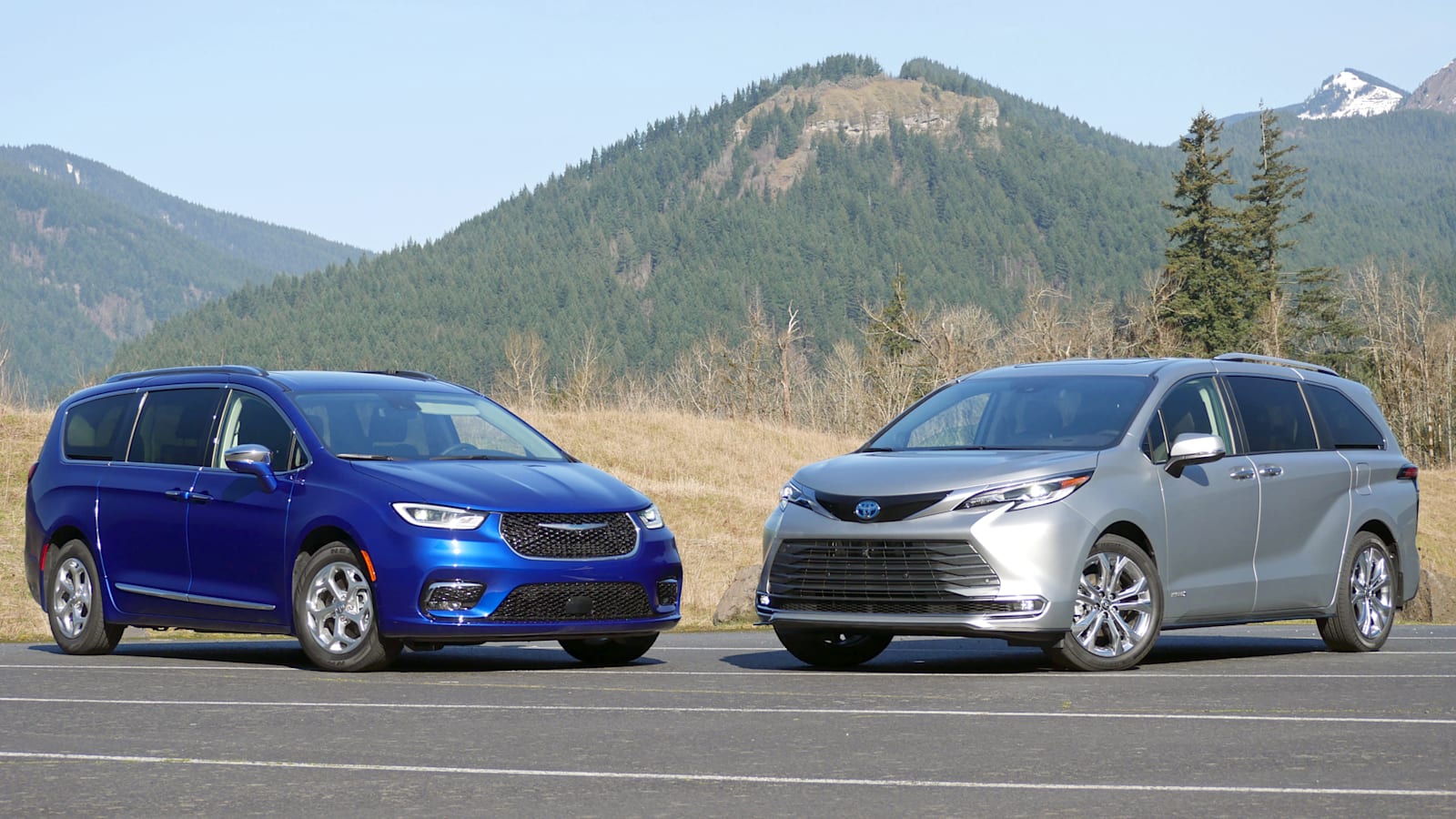
2021 Toyota Sienna XSE First Drive | It’s the “sporty” one
The XSE features unique styling along with suspension and steering differences that result in a different, sharper driving experience. Unlike the last Sienna, we don’t think getting this “sportier” version is a must for those who prefer a more responsive driving drive, but it certainly doesn’t hurt.

2022 Toyota Sienna Woodland First Drive Review: Not woodsy enough
The Woodland is a smart idea, but doesn’t go far enough in terms of style or capability.
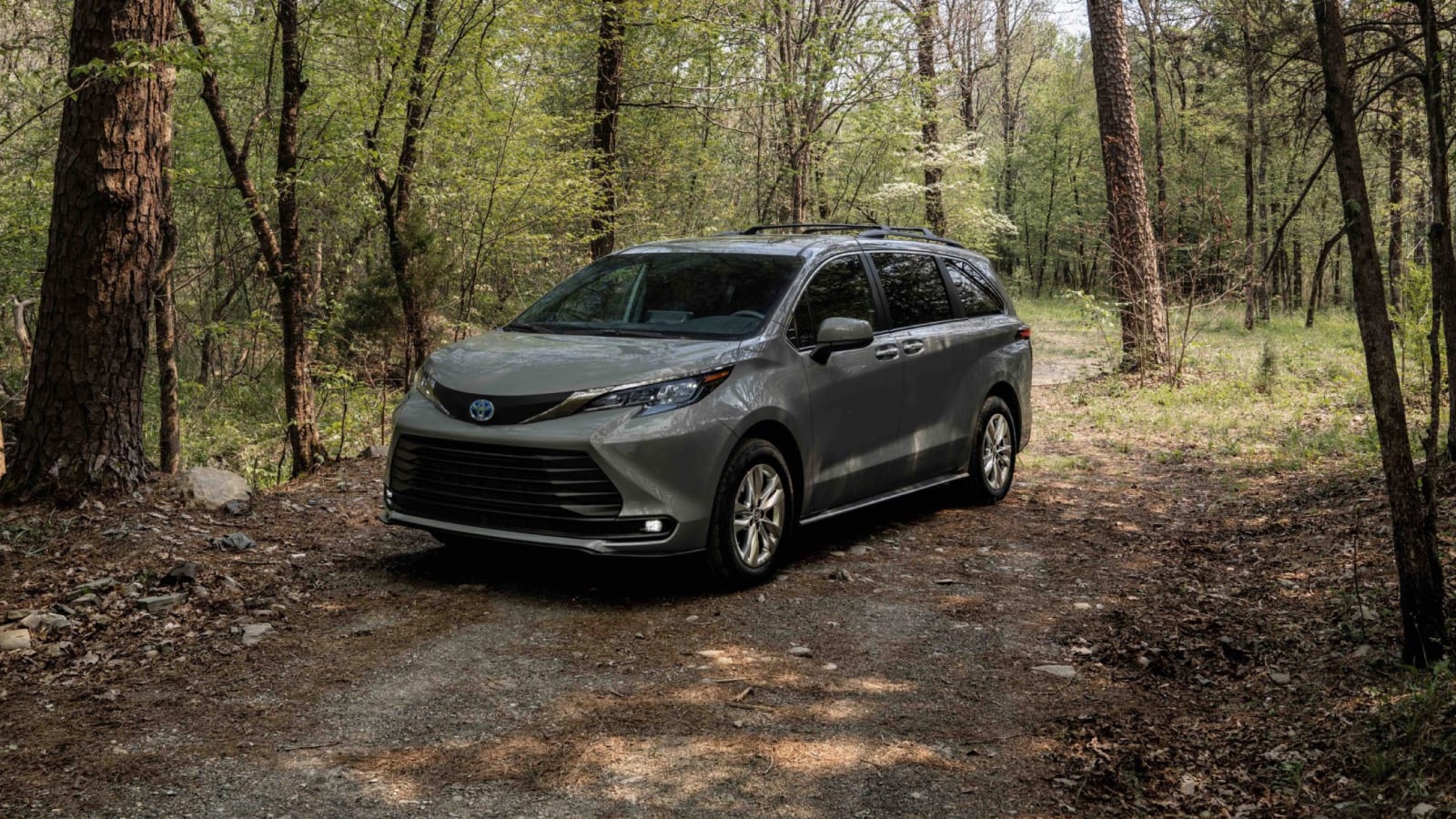
2021 Toyota Sienna First Drive | Functional efficiency with style
Our first review of the Sienna, covering in more detail its changes and new features.

2021 Toyota Sienna Interior Storage Review
We go full James Cameron in this deep dive into the Sienna’s interior storage, filling all 18(!) cupholders and its multitude of bins.
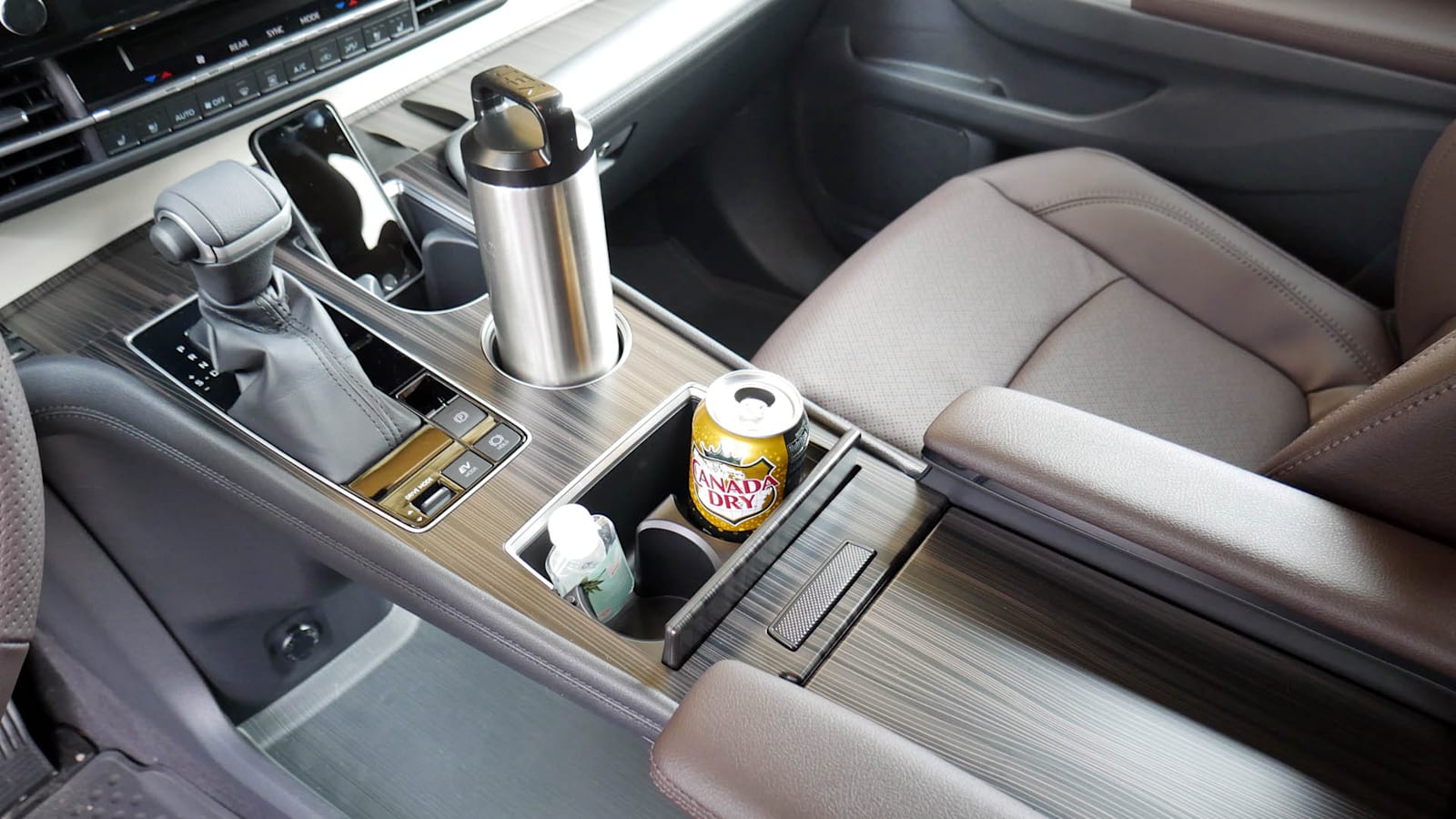
What is the 2023 Sienna price?
The Sienna’s prices go up by about $1,000 for 2023, including its more expensive destination charge of $1,335. The starting point is now $36,720, but before you get too steamed by that, know that the Chrysler Pacifica and Honda Odyssey have similarly high base prices. Only the Kia Carnival, which comes in around $33,000, is notably lower.
Despite being considered the “base” Sienna, though, the LE is more akin to the mid-grade trim levels of previous years so you’re at least getting the sort of equipment appropriate for its price point. Besides the increases in equipment and higher-quality cabin materials (see Interior section above), there are some key differences with the trim levels. The XSE and 25th Anniversary Edition feature sportier styling and chassis tuning, while the Woodland features a modest ground clearance increase and slightly more rugged styling cues. Note that Woodland pricing was not available at the time of this writing, but Toyota has said it will be produced for 2023.
All prices below include the destination charge.
LE: $36,720
XLE: $42,030
Woodland: Not available at this time
XSE: $44,280
25th Anniversary Edition: $48,005
Limited: $48,980
Platinum: $52,180
What are the Sienna safety ratings and driver assistance features?
Every Sienna includes forward collision warning with automatic emergency braking and pedestrian detection, lane-departure warning with steering assistance, blind-spot and rear cross-traffic warning, and full-speed adaptive cruise control. Automatic reverse emergency braking is included on all but the base LE. Also standard are Toyota’s Safety Connect emergency telematics services, along with a number of atypical airbags: driver’s knee, passenger seat under-cushion (prevents submarining under a seatbelt) and second-row seat-mounted side airbags.
The 2022 Sienna was named a Top Safety Pick+ by the Insurance Institute for Highway Safety, the highest rating a vehicle can achieve. In government crash tests, the Sienna received five out of five stars for overall and side crash protection, with a four-star frontal rating.
Related Video:



